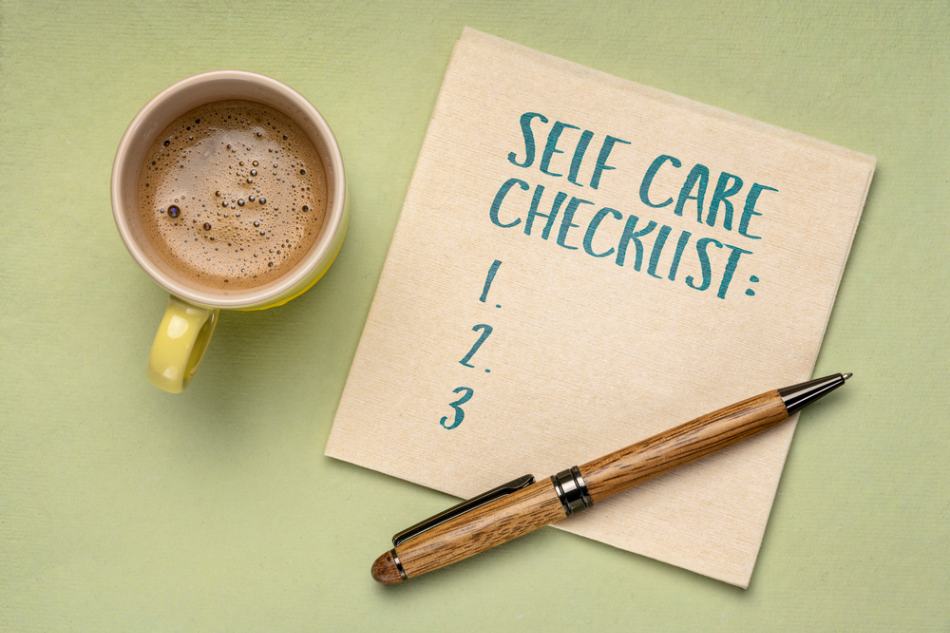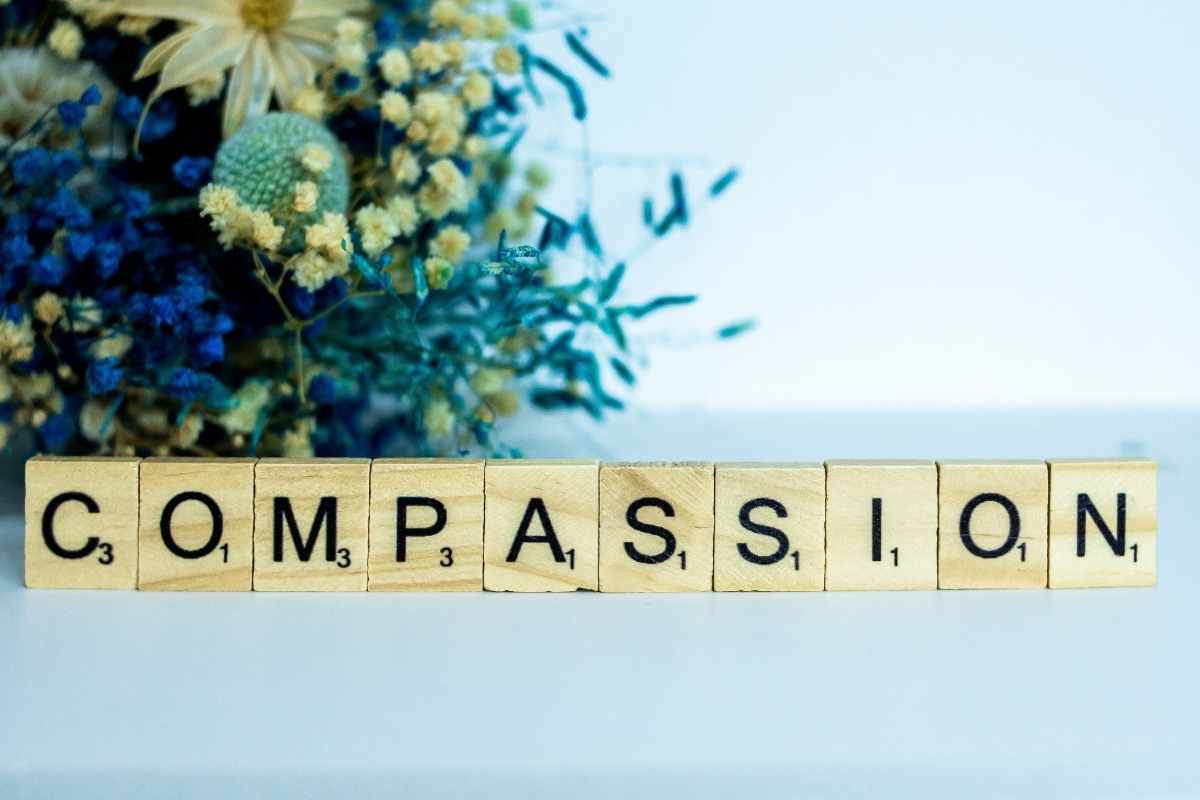March 26, 2018
What am I Feeling Right Now & What Do I Need?
Written by Rachel Eddins
Identifying and Expressing Feelings
Identifying and expressing feelings is one of the most fundamental skills for good mental health.
- First, the ability to recognize our feelings regulates our emotions – when we can name it, we can tame it. Yes, that’s right! If we can simply NAME an emotion, it can calm our brain down.
- Second, identifying our feelings allows us to then identify WHAT we need, then take action to MEET that need. When our needs are met, we are content.
- Third, expressing feelings allows us to be vulnerable with others and increases connection and intimacy, while reducing conflict.
Feelings are words that refer to specific emotions. For example, “I feel good” can be interpreted many ways: happy, excited, relieved, etc. “I feel happy” refers more specially to an emotion.
Once we identify what we are feeling, we can identify what we need. Meeting our needs on a consistent basis leads to greater satisfaction and fulfillment. It also helps to avoid compulsive behaviors, which can simply be attempts at meeting an unexpressed need.
Check in throughout your day and ask yourself, “What am I feeling right now and what do I need?”
The Cost of Unexpressed Feelings
As human beings we have many different ways of dealing with our feelings. The most fundamental way that we deal with our feelings is to conceal them from others and even to ourselves. Or we try to change them.
We suppress them, deny them, drink over them, drug over them, eat over them, exercise over them, get into pornography or just simply try to pretend they don’t exist. All of these ways of dealing with our feelings reflect a basic attitude that we should not feel what we feel so now we must try to do something about them.
When feelings are unexpressed or repressed we are more likely to experience mental health symptoms. Not expressing them does not mean they are not there.
Unexpressed feelings are more likely to lead to unhealthy behaviors or habits as well. Standing in front of the refrigerator without knowing why and similar unwanted behaviors often have the trigger of an unexpressed feeling.
Feelings can come out sideways when they live in the shadows and our behavior becomes reactive and out of our control. Have you ever snapped at someone unexpectedly? The feeling was lurking and came out in a reactive way vs a responsive way.
What is the difference between feelings and emotions?
An emotion is a physiological experience that gives you information about the world. You might say, you are HAVING an emotion.
A feeling is your KNOWING about that emotion. It’s your conscious awareness of emotion.
We are all experiencing emotions all the time. however, if we’ve been programmed not to listen to our emotions, ie., “big boys don’t feel scared”, then we are less likely to KNOW that we are having an emotion. Unfelt emotions in fact, are what often lead us to have BIG reactions.
Read more: This article explains the purpose of each of our primary emotions. This can help you not only recognize your emotions, but understand why you are feeling that way and provide clues to what you are needing.
What Others Say Doesn’t CAUSE Us to Feel a Certain Way
Have you ever said, “you make me so____!” It can feel like our feelings happen or occur based on others behaviors, right? Well, not actually. What others say and do is a stimulus, but not the actual cause of why we feel the way we do. Rather, it’s how we choose to receive what others say and do along with our own needs and expectations. The good news is this means we have responsibility, and thus, greater control over how we feel.
Read more: How to Identify and Express Needs to Revive Connection in Your Relationship
Example: someone gives us a negative message. We have four options on how to receive it:
- Take it personally by hearing blame and criticism. In this example, we accept the other person’s judgment and blame ourselves. When we do this, we are likely to feel shame and depression.
- Blame the speaker. “You’re the one who….”When we blame others, we’re likely to feel anger.
- Focus on our own feelings and needs. For example, “when I hear you say that I am self-centered, I feel hurt because I need some recognition of my efforts to be considerate of you.” Focusing on our own feelings and needs allows us to recognize the unmet need in the situation – in this case, the need to be recognized.
- Focus on the other person’s feelings and needs. For example, “Are you feeling hurt because you need more consideration?”
Lists of Feeling Words & Thoughts
Many people find it difficult to identify what they are feeling. Our thoughts are often connected to our emotions. This thought and emotions list can help you identify your emotions by locating your feelings or identify thoughts and emotions occurring together.
Use this feeling list for journaling and self awareness. Notice how your feelings change with your thoughts.
List of Unpleasant & Pleasant Feelings and Thoughts
What do I need?
Many people have been conditioned to shut down their feelings as well as their needs. That can make it challenging to identify both your feelings AND your needs. When you can’t identify your needs, you can’t take action to met them and you’re left feeling angry, empty, depressed or otherwise unsatisfied.
Use the references below to help you identify your feelings and needs.
Nonviolent Communication List of Feeling Words & Needs
List of Nonviolent Communication Feeling Words
Once you gain some practice in understanding and identifying emotions, you recognize the underlying needs. Once you know your needs, you can begin to take action to meet your needs.
Learn more about nonviolent communication.
The Feelings Word Chart
Read this chart of feeling words, which breaks feelings down into two categories: feelings when are needs are met, and feelings when are needs aren’t met.
Download the feelings chart here.
The Feelings Wheel
The feelings wheel can help you look deeper into what you are feeling by finding the more specific description or nuance. For example, rather than sad, you might identify disappointed as your feeling.
Download the feelings wheel here.
The Needs Wheel
Download the needs wheel here.
Describing Feelings
A feeling is a spontaneous inner reaction to a person, place or situation. It can be a present situation or a situation which I am thinking about or picturing in my mind. Feelings are neither right or wrong, good or bad. They can be pleasant or unpleasant (or difficult).
Feelings don’t mean anything. A feeling is what it is. A feeling is a feeling is a feeling.
We can describe feelings using P.I.I.B.M. (Physical sensation, Image, Inner conversation, Behavior, Memory).
Describing our feelings helps bring greater clarity to our internal experience. And it can help you to hone in on the more specific emotion that you are experiencing. The greater clarity you have, the greater you can regulate emotions and communicate with others.
Example: “I feel nervous ”
| Physical Sensation | Heart pounding, sweaty palms, upset stomach, dry mouth, chilled, hot, giggling, etc | “I feel nervous. My heart is pounding, my palms are sweating and my stomach is upset.” |
| Image
◆ Painting a picture |
An image of a scene or a situation | “I feel nervous like how a person might feel walking down a dark alley” or “I feel nervous like a child giving an oral report in front of the class” |
| ◆ Intensity | Rate the feeling on a scale from 1 to 10 | “I feel nervous. It’s about a 9” |
| ◆ Nature | A beautiful sunset, crashing waves, dark forest, ominous clouds, a sunny day, a raging storm, etc | “I feel nervous like when I see ominous clouds rolling in” or “I feel nervous like a deer might feel smelling a scent of danger.” |
| ◆ Color | Red, blue, black, white, etc | “I feel nervous. If it had a color it would be orange like a warning sign that is flashing danger.” |
| ◆ Taste | Sour, bitter, sweet, etc | “I feel nervous. If it had a color it would be orange like a warning sign that is flashing danger.” |
| ◆ Touch | Scratchy, soft, prickly, sharp, etc | “I feel nervous like touching a prickly porcupine” |
| ◆ Sound | Screech, crack of thunder, birds twittering and chirping, high pitched | “I feel nervous like when I hear the sound of thunder” |
| Inner Conversation | What am I telling myself, what am I thinking, what am I “believing” | “I feel nervous. I’m telling myself ‘I’m trapped. There is no way out.” |
| Behavior
◆ Actions |
What do I tend to act out? What do I tend to do? Where do I tend to go? | “I feel nervous. I tend to want to go eat something to soothe me” |
| ◆ Words | What words tend to come out of my mouth? What do I tend to say? | “I feel nervous. I tend to say ‘don’t bother me. Stay away from me’” |
| Memory
◆ Past experience |
Something you have experienced in the past like childbirth, riding a bike for the first time, walking on the beach, watching a movie, death of a loved one, etc | “I feel nervous like the time when I had to perform in front of an audience for the first time” |
| ◆ Shared memory | Something you have experience together, like your wedding day, buying a house, vacationing together, meeting each other for the first time, etc | “I feel nervous like how we felt waiting to hear if we got our mortgage approved” or “I felt nervous like how we felt when we got lost on our vacation” |
Checking in Daily: What am I Feeling?
Take a moment out of your day to ask yourself, “What am I feeling?” This may take no more than a couple of minutes but you can certainly take more time to clarify your feeling. Sometimes, simply acknowledging the feeling allows it to disappear but other feelings may require a little more working through.
Once you identify the feeling, write out some of the thoughts that go along with the feeling – see the Emotions & Thoughts list. This process may seem tedious at first but you are learning to train yourself to look within. And it will get easier, and eventually it will become second nature.
Journal Exercise: Identifying Thoughts, Feelings & Behaviors Worksheet
Once you identify the feeling, fill out the identifying thoughts, feelings and behaviors worksheet so that you can distinguish the context, and then connect the feeling to the thoughts that you are having in your own mind rather than to the external event or person. Lastly, see if you can identify any negative actions that lead from the feelings and thoughts.
This process will help you see how your thoughts, feelings and behaviors are connected.
Owning Your Thoughts and Feelings
Taking responsibility for your inner world is simply saying, “These are my thoughts and feelings”. I am thinking these thoughts, I am feeling these feelings and I am remembering my memories.
“Owning” your thoughts and feelings places you in charge of them and helps you recognize that you are the chooser. And being the chooser of your thoughts and feelings means that you can keep them or let them go.
Knowing that you are responsible for your thoughts and feelings opens up a whole new possibility in life. You discover that certain thoughts and feelings are the source of your unhappiness. When you can identify the unpleasant thoughts keeping you stuck, you can develop new strategies to change them. It might not be easy, but it does put you in greater control than just accepting them and feeling bad.
When you can “step outside” of the feeling, observe it, own it and realize that you are choosing the feeling, then you can decide whether this is what you want to keep.
Taking responsibility for your inner world is also a key for open, honest communication. True communication is simple. It is making another person aware of what is going on in your inner world.
When you live in your thoughts and feelings you cannot share them because you cannot observe them. All you can do is “be” them. And when you are your thoughts and feelings, all you can do is manipulate and try to control others to make you feel better or different. Instead of a relationship based on sharing and open communication, your relationships turn into blame and control.
Use the list of both pleasant and unpleasant feelings to identify your feelings and the thoughts that go along with them.
List of Unpleasant & Pleasant Feelings and Thoughts
Go to the next journal exercise: Conversations with Persons Exercise
Grounding & Self Soothing
Get instant access to your free ebook.
Why You Feel This Way
Get instant access to your free ebook.



























